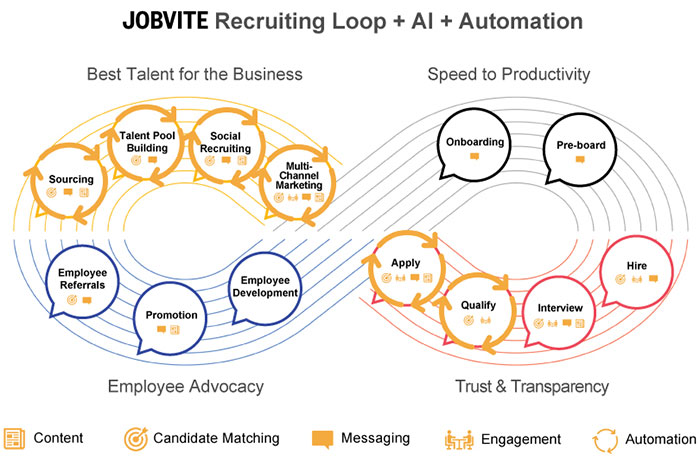Starting a new business is an exciting endeavor, yet it also brings with it the challenge of managing numerous financial aspects. With so many variables to consider, understanding startup and organizational costs is crucial for your business’ long-term success.
Startup and organizational costs encompass all the necessary expenses entailed in establishing and running a business, including pre-launch expenses like market research and branding, as well as post-launch costs such as operations and employee salaries. Effectively managing these costs is indispensable for business sustainability.
Embark on this insightful journey to uncover the crucial details of startup and organizational costs, and how they can be intelligently maneuvered for your business’ maximum benefit. Dive deep into the world of deductions, capitalizations, and everything in between – all tailored to fortify your financial strategy and the future of your company.
Categories of Startup Costs
To optimize the management of startup costs, it’s helpful to classify them into distinct categories. By doing this, you can better understand the financial dynamics of various expenses, which ultimately allows you to make more informed decisions regarding your business operations.
Startup costs can be divided into two main categories: fixed and variable costs.
Fixed Costs
Fixed costs are expenses that remain constant regardless of your business’ level of production, sales, or customer base. These costs must be paid on a regular basis, making them predictable and essential to account for in your budget. Some examples of fixed costs include:
- Rent for office or retail space
- Utilities, such as electricity, water, and internet
- Subscription services for software and tools required to run your business
Variable Costs
On the other hand, variable costs fluctuate depending on factors such as production levels, sales volume, and seasonal patterns. Because these expenses are directly tied to your business activities, they can be more challenging to predict and plan for. Common variable costs include:
- Raw materials or inventory needed to produce your goods or services
- Shipping and freight costs incurred when delivering products to customers
- Sales commissions and incentives paid to your staff based on their performance
Understanding and effectively managing both fixed and variable costs is crucial for your business’ long-term success and sustainability. By keeping a close eye on these expenses, you can identify potential areas for cost reduction and implement strategies to optimize your financial performance.
Deducting Startup Costs
One important aspect of managing startup costs is understanding how you can deduct them from your federal taxes. This can help alleviate some of the financial burden associated with launching and running a new business, ultimately contributing to a healthier bottom line.
According to the IRS, “generally the business can recover costs for assets through depreciation deductions. For costs paid or incurred after September 8, 2008, the business can deduct a limited amount of startup and organizational costs” [\[source\]](https://www.irs.gov/newsroom/heres-how-businesses-can-deduct-startup-costs-from-their-federal-taxes).
It’s crucial to familiarize yourself with IRS guidelines for startup cost deductions, as they play a significant role in your overall fiscal strategy.
Capital Expenditures vs. Deductible Expenses
To ensure you’re correctly deducting your startup costs, it’s important to understand the difference between capital expenditures and deductible expenses. Capital expenditures are investments in fixed assets or improvements to an existing asset, which typically provide a benefit over an extended period. These costs may include purchasing equipment, vehicles, or real estate, as well as making improvements to owned property; they are usually not deductible as current-year expenses.
On the other hand, deductible expenses are everyday costs of running your business that can be reported on your income tax return and offset against your taxable income. By accurately identifying and categorizing your various startup costs, you can make the most of available deductions and minimize your tax burden.
Limitations and Qualifications for Deduction
It’s crucial to be mindful of specific limitations and qualifications imposed by the IRS when it comes to deducting startup costs. For example, not all startup expenses can be fully deducted in the year they are incurred. Instead, the IRS allows businesses to amortize certain costs over a 180-month period, starting from the month your business becomes active [\[source\]](https://www.wolterskluwer.com/en/expert-insights/startup-costs-and-organizational-expenses-are-deducted-over-180-months).
Qualifying Costs
To make the most of available deductions, you need to identify which of your startup expenses qualify as deductible startup costs. Some examples of recoverable startup costs include:
- The cost of conducting market research and analysis to evaluate the potential of your product or service
- Advertising and promotional expenses related to the opening of your business, such as print materials, online ads, or event sponsorships
- Travel and transportation costs incurred while visiting prospective clients, suppliers, or partners to establish your business relationships
Remember, the IRS has the authority to issue regulations that clarify the date a new business is considered to have begun for the purpose of amortizing startup costs [\[source\]](https://www.wolterskluwer.com/en/expert-insights/startup-costs-and-organizational-expenses-are-deducted-over-180-months). Therefore, it’s essential to stay up-to-date with the latest guidelines and developments to ensure you’re handling your startup costs in the most efficient and tax-compliant manner.

Source: Journal of Accountancy
As your business grows and evolves, it’s essential to continually reassess and adjust your startup cost management strategies. By applying these practical insights, you can make better financial decisions and create a solid foundation for your business’ long-term success. Remember, effective financial management is at the heart of any successful startup, and it’s up to you to take the necessary steps to achieve sustainable growth and profitability.
For more information on related topics, you might be interested in exploring some of our other articles, such as “Are Startup Costs Amortized Or Depreciated?” or “Startup Without Investment: How to Succeed“. These resources can provide valuable insights and guidance as you navigate the complex world of startup finances.
Organizational Costs
Organizational costs refer to the expenses related to establishing a legal entity for your startup. While the broader startup costs involve all aspects of setting up your business, organizational costs focus on legal and administrative matters. These costs incorporate expenses for registration, incorporation, permits, licenses, and other legal fees.
Deductibility and Amortization
Many organizational costs can be deducted from your federal taxes, providing relief to new businesses. Organizational costs not exceeding $5,000 can be deducted in the year your business first begins active operations; any costs above this amount should be amortized over a period of 180 months, starting from the month your business commences its activities[^2^].
By amortizing costs, businesses can offset their initial investment in legal and administrative procedures, potentially boosting their profitability. Understanding the specific deductions and amortization schedules can help entrepreneurs make informed decisions as they lay the foundation for their businesses.
Nonqualifying Costs
It is important to note that not all organizational costs qualify for deduction or amortization. Certain expenses, such as interest payments, real estate taxes, and research and experimental costs, can’t be amortized — they must be handled as regular deductions or capitalized as part of asset cost[^3^]. It is crucial to separate these nonqualifying costs from your organizational expenses to ensure accurate financial reporting and compliance with tax regulations.
Capitalizing Costs
Capitalizing costs involves transforming certain upfront expenses into tangible or intangible assets that can be depreciated or amortized over time. By capitalizing costs, businesses allocate the expense to their balance sheet instead of reporting them as a current-year deduction on their income statement. This practice can have a significant impact on financial reporting and business valuation in the long run.
For startup entrepreneurs, understanding the difference between current-year deductions, capital improvements, and organizational costs is essential to managing their finances effectively. By capitalizing necessary expenses and utilizing available deductions, new businesses can maintain a strong fiscal position as they continue to grow and expand.
Frequently Asked Questions
What are the key differences between organizational costs and general startup costs?
Organizational costs are focused on legal and administrative expenses involved in establishing a legal entity for your business. In contrast, general startup costs encompass a wide range of expenses, including those related to market research, product development, advertising, employee salaries, and operational costs. Unlike organizational costs, some general startup costs are not eligible for tax deductions or amortization.
Can all organizational costs be deducted or amortized?
No, not all organizational costs can be deducted or amortized. Some expenses, such as interest payments, real estate taxes, and research and experimental costs, do not qualify and must be treated separately in your financial reporting.
What is the maximum amount of organizational costs that can be deducted in a year?
You can deduct up to $5,000 of organizational costs in the year your business first begins active operations[^2^]. Anything above this amount should be amortized over a period of 180 months.
What are the advantages of capitalizing costs?
Capitalizing costs allows businesses to allocate large upfront expenses as assets on their balance sheet, which can be depreciated or amortized over a longer period. By doing so, businesses may experience lower taxable income, improving their long-term profitability.
How do I determine which organizational costs qualify for deduction or amortization?
Carefully examining the specific expenses involved in your business formation process can help you identify which organizational costs qualify for deduction or amortization. It is advisable to consult with a tax professional or accountant to ensure that you’re accurately categorizing your expenses and taking advantage of available tax savings.






